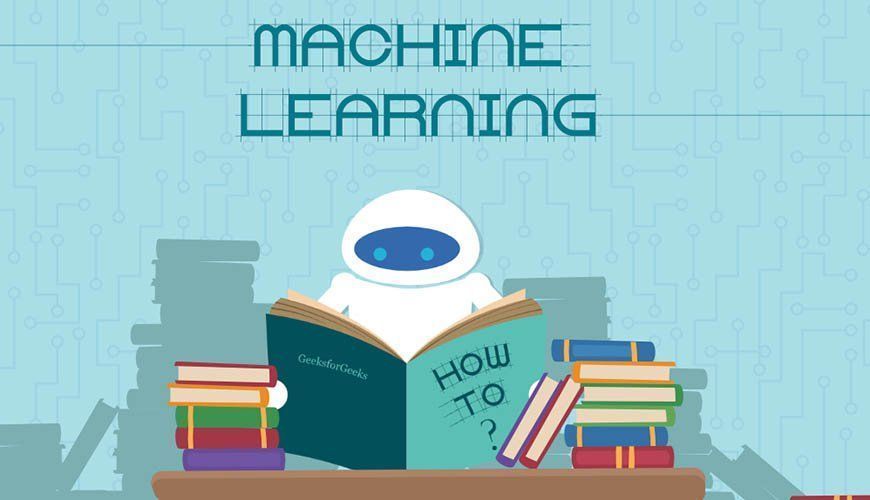What Is Machine Learning and What Does It Do
Machine Learning is a subset of artificial intelligence, thanks to which we can have systems that learn and develop automatically and without explicit planning.
Machine Learning: The question may be whether computers can learn from the data provided to them. We have to say yes. Computers can receive new data in new situations and adapt to it, learn from previous calculations, and make repeatable decisions. In the following, we will discuss machine learning or machine learning.
What is Machine Learning?
Machine Learning is a subset of artificial intelligence, thanks to which we can have systems that learn and develop automatically and without explicit planning.
Machine learning essentially focuses on developing computer programs that can access and learn data independently.
The learning process begins with observations or data, such as examples, direct experiences, structures, etc., and we seek patterns in this data to help us make better decisions in the future.
The primary purpose of machine learning is to allow computers to learn automatically and take actions without human intervention or assistance.
Classification Of Machine Learning Methods
Learning machine with a supervisor
In this category, the System can apply what it has learned to the future and predict future events by tagging data and samples. The System starts with analyzing known data and eventually generates a learning algorithm and an inferred function to predict output values.
Even this algorithm can compare its outputs with the correct ones to find out how accurate its operation is and get its error rate.
Unsupervised learning machine
In this way, our data is not categorized and tagged. Unsupervised machine learning studies how the System can infer a function to find hidden structures from unlabeled data. However, these algorithms cannot detect the correct output.
Semi-supervised machine learning
These machine learning algorithms are somewhere between observer and non-observer modes. They use both labeled and unlabeled data to learn. Usually, in this method, a small amount of data is labeled, and a large amount is unlabeled.
Systems that use this method can significantly increase the accuracy of learning. This method is usually used when obtaining labeled data, which requires relevant skills and resources.
Reinforcement machine learning
This method is a machine learning method that uses trial and error to strengthen and improve its performance. In fact, in this method, the System communicates with the environment and uses feedback to improve itself.
This way, the machine or software automatically finds the ideal behavior to maximize performance. Then, this feedback is a reinforcing signal.
Machine learning applications
Machine learning is applicable in various fields such as weather forecasting, medical diagnostics, data analysis, surveillance of CCTV and Network cameras, use in social networks (for personalizing news feeds, targeted advertising, etc.), filtering malware, and more.
Algorithms for Machine learning explained.

Supervised learning vs. unsupervised learning
Independent of these divisions, two other kinds of machine learning algorithms are supervised and unsupervised. In supervised learning, you provide a training data set with answers, such as pictures of animals along with their names.
The goal of that training would be to train a model to correctly identify a picture (of a kind of animal included in the training set) that it had not previously seen.
In unsupervised learning, the algorithm analyzes the data and tries to produce meaningful results. The result might be, for example, a set of related data points within each cluster. This method works better when the clusters don’t overlap.
Training and evaluation turn supervised learning algorithms into models by optimizing their parameters to find the values that best match the ground truth of your data.
The algorithms often rely on variants of steepest descent for their optimizers, such as stochastic gradient descent (SGD), which is essentially steepest descent performed multiple times from randomized starting points.
Common refinements on SGD add factors that correct the direction of the gradient based on momentum or adjust the learning rate based on progress from one pass through the data (called an epoch) to the next.
Data cleaning for machine learning
There is no such thing as clean data in the wild. To be useful for machine learning, data must be aggressively filtered. For example, you’ll want to:
- Look at the data and exclude any columns with a lot of missing data.
- Look at the data again and pick the columns you want to use for your prediction. (This is something you may want to vary when you iterate.)
- Exclude any rows that still have missing data in the remaining columns.
- Correct obvious typos and merge equivalent answers. For example, US, US, USA, and America should be incorporated into a single category.
- Exclude rows that are out of range. For example, suppose you’re analyzing taxi trips within New York City. In that case, you’ll want to filter out rows with pick-up or drop-off latitudes and longitudes outside the metropolitan area’s bounding box.
You can do much more, but it will depend on the data collected. Although this can be tedious, if you set up a data-cleaning step in your machine learning pipeline, you can modify and repeat it.
Data encoding and normalization for Machine Learning
To use categorical data for machine classification, you must encode the text labels into another form. There are two standard encodings.
One is label encoding, meaning each text label value is replaced with a number. The other is one-hot encoding, meaning each text label value is turned into a column with a binary value (1 or 0). Most machine learning frameworks have functions that do the conversion for you.
In general, one-hot encoding is preferred, as label encoding can sometimes confuse the machine learning algorithm into thinking that the encoded column is ordered.
To use numeric data for machine learning regression, you usually need to normalize the data. Otherwise, the numbers with more extensive ranges may tend to dominate the Euclidean distance between feature vectors; their effects can be magnified at the expense of the other fields, and the steepest descent optimization may have difficulty converging.
Several ways are available to normalize and standardize data for ML, including min-max normalization, mean normalization, standardization, and scaling to unit length.
FAQ
What is machine learning?
Machine learning is a branch of artificial intelligence where computers learn patterns and make decisions from data without explicit programming.
How do machine learning models learn?
Models are trained on data examples, adjusting parameters to minimize errors and improve predictions or classifications.
Where is machine learning used?
It’s used in recommendation systems, fraud detection, natural language processing, medical diagnosis, and autonomous systems.
